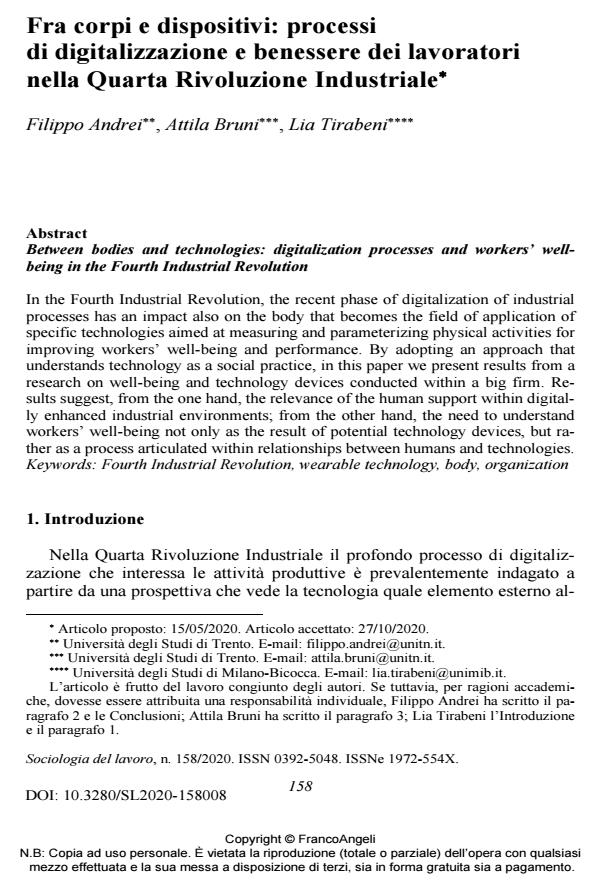Between bodies and technologies: digitalization processes and workers’ wellbeing in the Fourth Industrial Revolution
Journal title SOCIOLOGIA DEL LAVORO
Author/s Filippo Andrei, Attila Bruni, Lia Tirabeni
Publishing Year 2020 Issue 2020/158
Language Italian Pages 20 P. 158-177 File size 242 KB
DOI 10.3280/SL2020-158008
DOI is like a bar code for intellectual property: to have more infomation
click here
Below, you can see the article first page
If you want to buy this article in PDF format, you can do it, following the instructions to buy download credits

FrancoAngeli is member of Publishers International Linking Association, Inc (PILA), a not-for-profit association which run the CrossRef service enabling links to and from online scholarly content.
In the Fourth Industrial Revolution, the recent phase of digitalization of industrial processes has an impact also on the body that becomes the field of application of specific technologies aimed at measuring and parameterizing physical activities for improving workers’ well-being and performance. By adopting an approach that understands technology as a social practice, in this paper we present results from a research on well-being and technology devices conducted within a big firm. Results suggest, from the one hand, the relevance of the human support within dig-itally enhanced industrial environments; from the other hand, the need to understand workers’ well-being not only as the result of potential technology devices, but rather as a process articulated within relationships between humans and tech-nologies.
Keywords: Fourth Industrial Revolution, wearable technology, body, organization
Filippo Andrei, Attila Bruni, Lia Tirabeni, Fra corpi e dispositivi: processi di digitalizzazione e benessere dei lavoratori nella Quarta Rivoluzione Industriale in "SOCIOLOGIA DEL LAVORO " 158/2020, pp 158-177, DOI: 10.3280/SL2020-158008